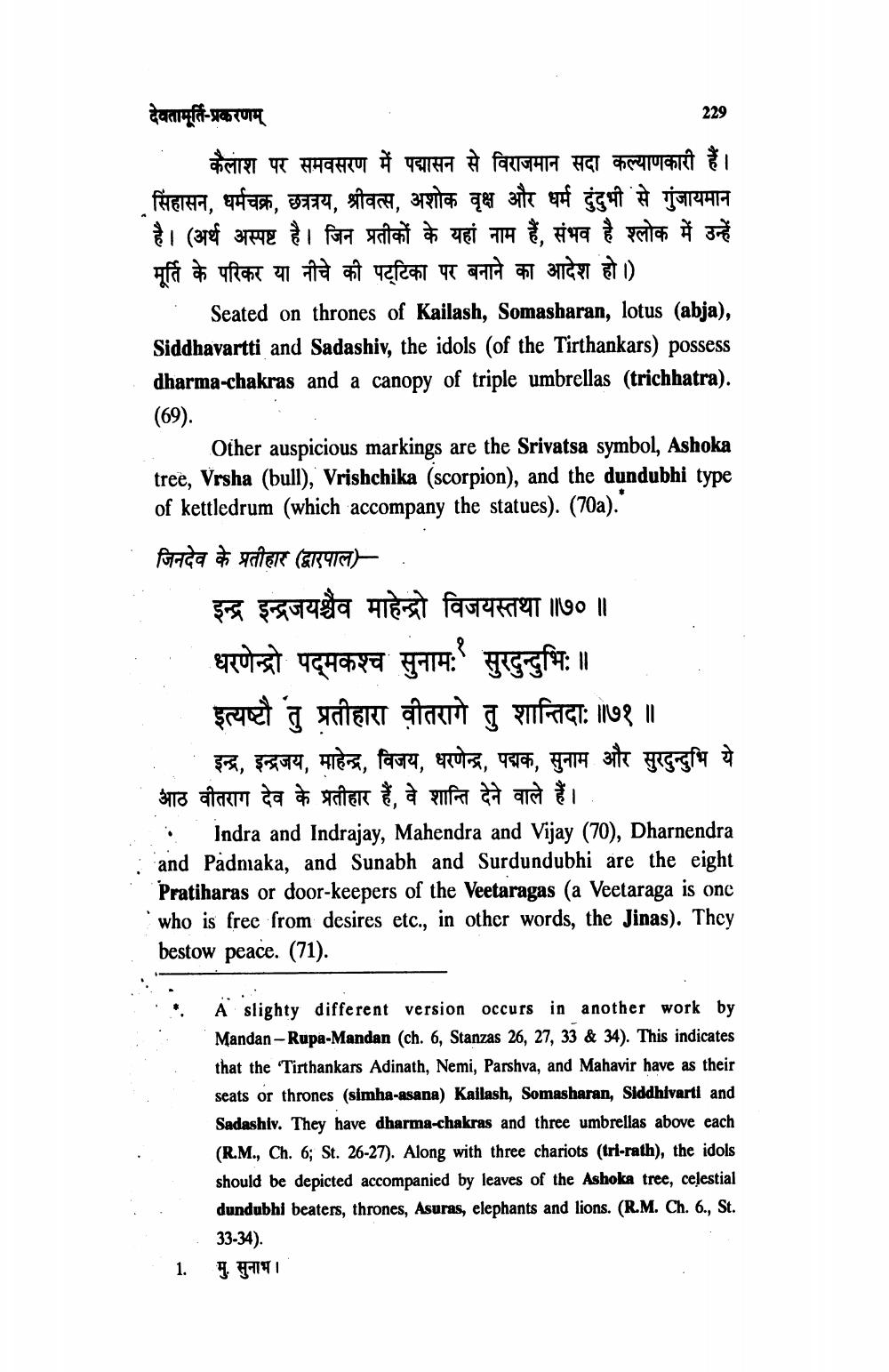________________
देवतामूर्ति-प्रकरणम्
229 कैलाश पर समवसरण में पद्मासन से विराजमान सदा कल्याणकारी हैं। सिंहासन, धर्मचक्र, छत्रत्रय, श्रीवत्स, अशोक वृक्ष और धर्म दुंदुभी से गुंजायमान है। (अर्थ अस्पष्ट है। जिन प्रतीकों के यहां नाम हैं, संभव है श्लोक में उन्हें मूर्ति के परिकर या नीचे की पट्टिका पर बनाने का आदेश हो।)
Seated on thrones of Kailash, Somasharan, lotus (abja), Siddhavartti and Sadashiv, the idols (of the Tirthankars) possess dharma-chakras and a canopy of triple umbrellas (trichhatra). (69).
Other auspicious markings are the Srivatsa symbol, Ashoka tree, Vrsha (bull), Vrishchika (scorpion), and the dundubhi type of kettledrum (which accompany the statues). (70a). जिनदेव के प्रतीहार (द्वारपाल)- .
इन्द्र इन्द्रजयश्चैव माहेन्द्रो विजयस्तथा ॥७० ॥ धरणेन्द्रो पद्मकश्च सुनाम:' सुरदुन्दुभिः ॥
इत्यष्टौ तु प्रतीहारा वीतरागे तु शान्तिदाः ॥७१ ॥ . इन्द्र, इन्द्रजय, माहेन्द्र, विजय, धरणेन्द्र, पद्मक, सुनाम और सुरदुन्दुभि ये
आठ वीतराग देव के प्रतीहार हैं, वे शान्ति देने वाले हैं। .: Indra and Indrajay, Mahendra and Vijay (70), Dharnendra and Padmaka, and Sunabh and Surdundubhi are the eight Pratiharas or door-keepers of the Veetaragas (a Veetaraga is one who is free from desires etc., in other words, the Jinas). They bestow peace. (71).
A slighty different version occurs in another work by Mandan-Rupa-Mandan (ch. 6, Stanzas 26, 27, 33 & 34). This indicates that the 'Tirthankars Adinath, Nemi, Parshva, and Mahavir have as their seats or thrones (simha-asana) Kailash, Somasharan, Siddhivarti and Sadashiv. They have dharma-chakras and three umbrellas above each (R.M., Ch. 6; St. 26-27). Along with three chariots (tri-rath), the idols should be depicted accompanied by leaves of the Ashoka tree, celestial dundubhi beaters, thrones, Asuras, elephants and lions. (R.M. Ch. 6., St. 33-34). मु. सुनाभ।
___ 1.




